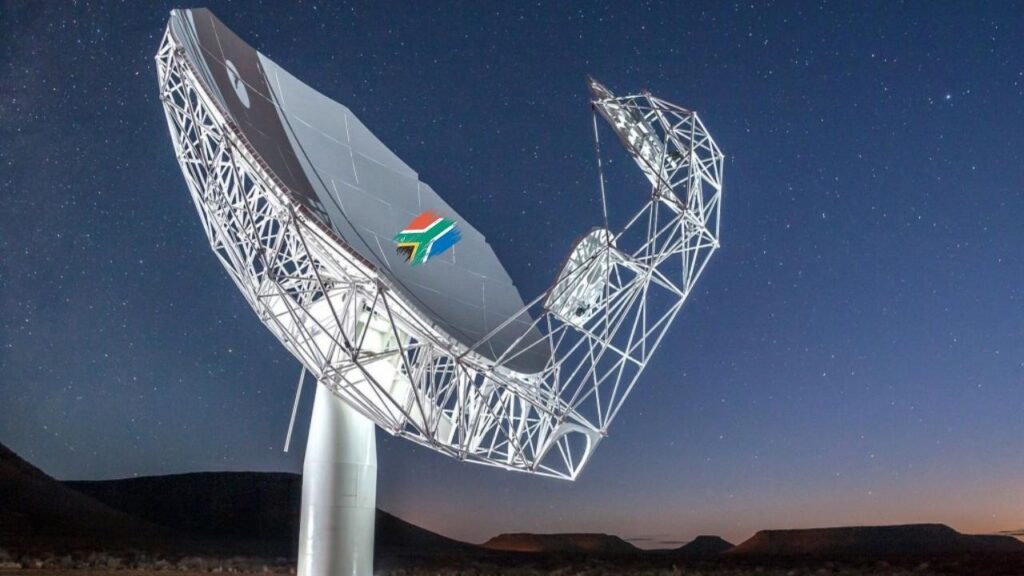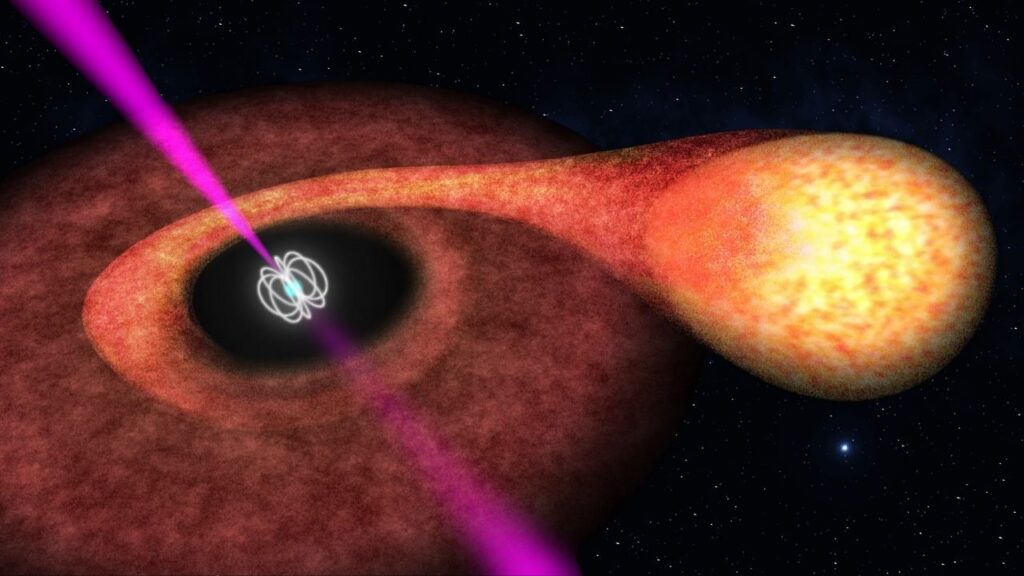Think It Was a Black Hole: When we imagine the most mysterious objects in space, black holes often come to mind as some of the universe’s most fascinating and extreme phenomena. These regions of space are so dense and have such strong gravity that nothing—not even light—can escape from them. But recent discoveries have revealed a celestial object that doesn’t fit neatly into our usual categories. Scientists studying this object suspect it might be something even stranger than a black hole, potentially reshaping our understanding of the cosmos.

This article will take you through what this object is, why it challenges existing theories, and what it could mean for the future of astronomy and physics. Whether you’re a beginner or a professional in the field, this guide breaks down the concepts into simple, easy-to-follow sections, supported by accurate data and expert sources.
Think It Was a Black Hole?
| Topic | Details |
|---|---|
| Object Type | Possible new type of compact celestial object |
| Location | Star cluster NGC 1851 |
| Companion Mass | Between 2.09 and 2.71 times the mass of the Sun |
| Mass Gap | Between the heaviest known neutron stars (~2.2 solar masses) and lightest known black holes (~5 solar masses) |
| Observational Tool | MeerKAT radio telescope, South Africa |
| Potential Explanations | Heavy neutron star, lightweight black hole, exotic compact object (quark star or gravastar) |
| Scientific Importance | Challenges current stellar evolution models; tests theories of ultra-dense matter; impacts gravitational wave research |
| Official Source | The Conversation – Black Hole or Neutron Star? |
The discovery of a mysterious compact object in the mass gap between neutron stars and black holes is an exciting breakthrough that challenges our understanding of the cosmos. Whether it turns out to be a heavy neutron star, a lightweight black hole, or an exotic object, it expands the frontier of astrophysics and invites further exploration.
As instruments like MeerKAT and gravitational wave observatories become more sensitive, we expect to uncover more such enigmatic objects. Each discovery enriches our knowledge about how stars live and die, the fundamental nature of matter, and the incredible diversity of objects in our universe.
Understanding the Discovery: A Mysterious Companion in NGC 1851
Astronomers recently focused on a millisecond pulsar located in the globular star cluster NGC 1851, about 39,000 light-years away in the constellation Columba. Pulsars are rapidly spinning neutron stars that emit beams of electromagnetic radiation from their magnetic poles. Because these beams sweep past Earth at regular intervals, pulsars act like highly precise cosmic clocks.
Using the MeerKAT radio telescope in South Africa—one of the most sensitive radio telescopes globally—scientists detected an unusual companion orbiting this pulsar. What makes this companion so intriguing is that it is completely invisible to all traditional telescopes; it emits no detectable light, X-rays, or gamma rays, despite its significant gravitational influence.

By carefully measuring changes in the timing of the pulsar’s radio pulses, researchers inferred that the companion has a mass between 2.09 and 2.71 times that of the Sun. This estimation places it in an unusual mass range astronomers call the “mass gap.”
The Mass Gap: A Cosmic Mystery
The mass gap is an astrophysical puzzle representing the rare range of masses between the heaviest neutron stars and the lightest black holes. To understand this, let’s briefly explore these two types of objects:
- Neutron Stars: These remnants form when stars around 8 to 20 times the mass of the Sun exhaust their fuel and explode as supernovae. The star’s core collapses under gravity, packing more mass than the Sun into a sphere roughly 20 kilometers wide. Neutron stars have incredibly high densities—just a sugar-cube-sized piece would weigh billions of tons on Earth. Their known maximum mass is around 2.2 solar masses; beyond this, they’re believed to collapse into black holes.
- Black Holes: If the collapsing core’s mass exceeds this limit, it collapses into a black hole. Stellar black holes detected in binary systems usually have masses starting at about 5 solar masses and up.
The space between about 2.2 and 5 solar masses is where we expect very few objects to exist. This gap has been a challenge for astrophysicists to explain fully and is a key area of research. The discovery of a compact object in this gap suggests either that our understanding is incomplete or that entirely new classes of objects exist.
Why Is the Companion’s Mass Important?

Mass plays a crucial role in determining the nature and fate of cosmic objects. The companion’s mass, estimated through pulsar timing measurements, is too heavy to be a typical neutron star but too light to be a known black hole. This leads to three main hypotheses about its nature:
1. A Heavy Neutron Star
One possibility is that this object is a massive neutron star, heavier than those we’ve previously observed. How could such an object form?
- Neutron Star Mergers: When two neutron stars collide and merge, they can form a more massive, stable neutron star rather than collapsing immediately into a black hole. This hypothesis fits well with recent gravitational wave detections of neutron star mergers, such as GW170817 detected by LIGO and Virgo observatories.
- Implications: If this is the case, it could help astrophysicists refine the equation of state for neutron star matter—the relationship between pressure, density, and temperature inside neutron stars—which remains one of the great unsolved problems in physics.
2. A Lightweight Black Hole
Alternatively, the companion might be the lightest black hole ever detected. Traditional black hole formation theories suggest a lower mass limit due to how massive stars collapse, but recent observations and simulations indicate that black holes could form at lower masses under certain conditions:
- Direct Collapse or Failed Supernova: Some stars might collapse directly into black holes without a bright supernova explosion, leading to smaller-mass black holes.
- Observational Importance: Detecting such lightweight black holes would fill in gaps in the population statistics of black holes and help validate or challenge current models of stellar evolution.
3. An Exotic Compact Object
There is also a more speculative possibility: the companion could be an exotic compact object. This includes theoretical objects like:
- Quark Stars: Composed of quark matter, where neutrons dissolve into their constituent quarks under extreme pressure, potentially producing objects more compact and dense than neutron stars.
- Gravastars: Hypothetical alternatives to black holes that replace the event horizon with a shell of exotic matter, avoiding the singularity.
If confirmed, such exotic objects would revolutionize our understanding of matter under extreme conditions and general relativity.
The Role of Pulsars and Radio Telescopes in the Discovery
Detecting these enigmatic objects requires precise observations:
- Pulsar Timing: Pulsars emit beams of radiation at regular intervals. When a pulsar has a companion, its motion causes slight variations in the timing of these pulses. By measuring these variations precisely, astronomers can infer the mass and orbit of the unseen companion.
- MeerKAT Telescope: Located in South Africa, MeerKAT is a state-of-the-art radio telescope array that offers exceptional sensitivity and resolution, making it ideal for pulsar studies. It consists of 64 dish antennas working together to detect faint radio signals from deep space.
- Why Radio Waves? Radio observations can penetrate dust clouds that obscure optical telescopes, making them essential for studying dense environments like globular clusters.
Broader Implications of This Discovery
Advancing Astrophysics
Finding an object in the mass gap has ripple effects across several fields:
- Stellar Evolution: It challenges existing models of how stars end their lives and how compact remnants form. This may lead to revising mass limits and collapse scenarios.
- Nuclear Physics: Provides a laboratory to understand matter at densities and pressures unreachable on Earth, testing quantum chromodynamics and other fundamental theories.
- Gravitational Wave Astronomy: Objects in this mass range could be key sources for gravitational waves. Studying them helps improve detection techniques and interpret signals from detectors like LIGO, Virgo, and KAGRA.
Practical Advice for Researchers and Enthusiasts
- For Scientists: Continued multiwavelength observations, improved pulsar timing, and gravitational wave studies will be essential. Collaboration between observatories worldwide enhances data quality and interpretation.
- For Students and Educators: Understanding compact objects is fundamental to astrophysics. Exploring topics like neutron stars, black holes, and exotic matter can provide insight into cutting-edge research.
- For Amateur Astronomers: Following developments from observatories like MeerKAT and engaging with public data releases can deepen appreciation and understanding of cosmic phenomena.
Turning Heat into Power: New Thermoelectric Materials Could Revolutionize Waste Energy Use
Graphene Breakthrough Promises Faster, Smaller, More Efficient Electronics
The Rise of Electrochromic Glass: Smart Windows That Save Energy and Adapt to Light
FAQs About Think It Was a Black Hole?
Q1: How do scientists measure the mass of an invisible object?
Scientists use pulsar timing, which detects changes in the arrival times of radio pulses from a pulsar affected by the gravitational pull of an unseen companion. These timing shifts can be modeled to estimate the companion’s mass.
Q2: What is the significance of the “mass gap”?
The mass gap represents a range between the heaviest neutron stars and the lightest black holes where few objects have been observed. Filling this gap helps refine models of star death and compact object formation.
Q3: Can black holes have less than 5 solar masses?
While most detected black holes have masses above 5 solar masses, recent evidence suggests lightweight black holes may exist, though confirming this requires more observations.
Q4: Are quark stars and gravastars real?
They remain theoretical. No conclusive evidence exists yet, but detecting objects that don’t fit neutron star or black hole categories could provide clues.
Q5: How will this discovery impact future research?
It will inspire targeted searches for similar objects, refine astrophysical models, and improve gravitational wave detection capabilities.






